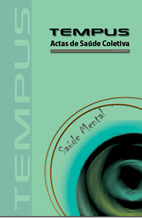Resumo
The present study describes the Program Life at Home (PLH), implemented in 2003, at St.Vicent Hospital, in the Federal District, due to growing demand on the part of chronic mental health patients for better deinstitutionalized psychiatric care in community-based environments. The process of collective development of PLH, comprised of three phases, is described, emphasing the challenges and progresses achieved in organizing an integrated mental health network within the primary health care system. Developing receptiveness by the team, fostering links between the health professionals and clients and sharing responsibilities proved to be fundamental in dealing with problems within the hospital setting, as well as establishing ties to families in the community. National police guidelines were followed in order to organize the service and work process: an open service centered on the needs of clients and family members; based on social inclusion, interdisciplinary team work, using matrix support model to link actions with primary family health units, improved intersectorial actions and the construction of social networks. The Life at Home Program is an example of an experience involving knowledge, practices and technologies which can serve as reflection and orientation to managers, health professionals and clients in terms of setting up deinstitutionalized and integrated health care and, especially in organizing mental health network at the primary care level.A Tempus garante critérios rigorosos, por meio de avaliação sistemática. Os autores se responsabilizam pela veracidade e ineditismo do trabalho cabendo a eles a cessão de direitos de publicação à revista. A confiabilidade dos conteúdos e a marca própria de apresentação tem como objetivo uma comunicação personalizada, adaptada aos padrões da revista, na medida em que adota critérios de excelência exigidos por seus usuários e especialistas, considerando os rigores da comunicação científica. Os autores devem especificar sua contribuição individual na concepção, delineamento, execução do trabalho, análise ou interpretação dos dados, redação e aprovação final do manuscrito. Incluir Fontes de financiamento e de apoio logístico das pesquisas. Ao final da submissão do artigo, os autores devem enviar uma declaração de cessão de direitos de publicação à Revista TEMPUS , assinada e no formato PDF (Portable Document Format ): Modelo da declaração de cessão de direitos.
